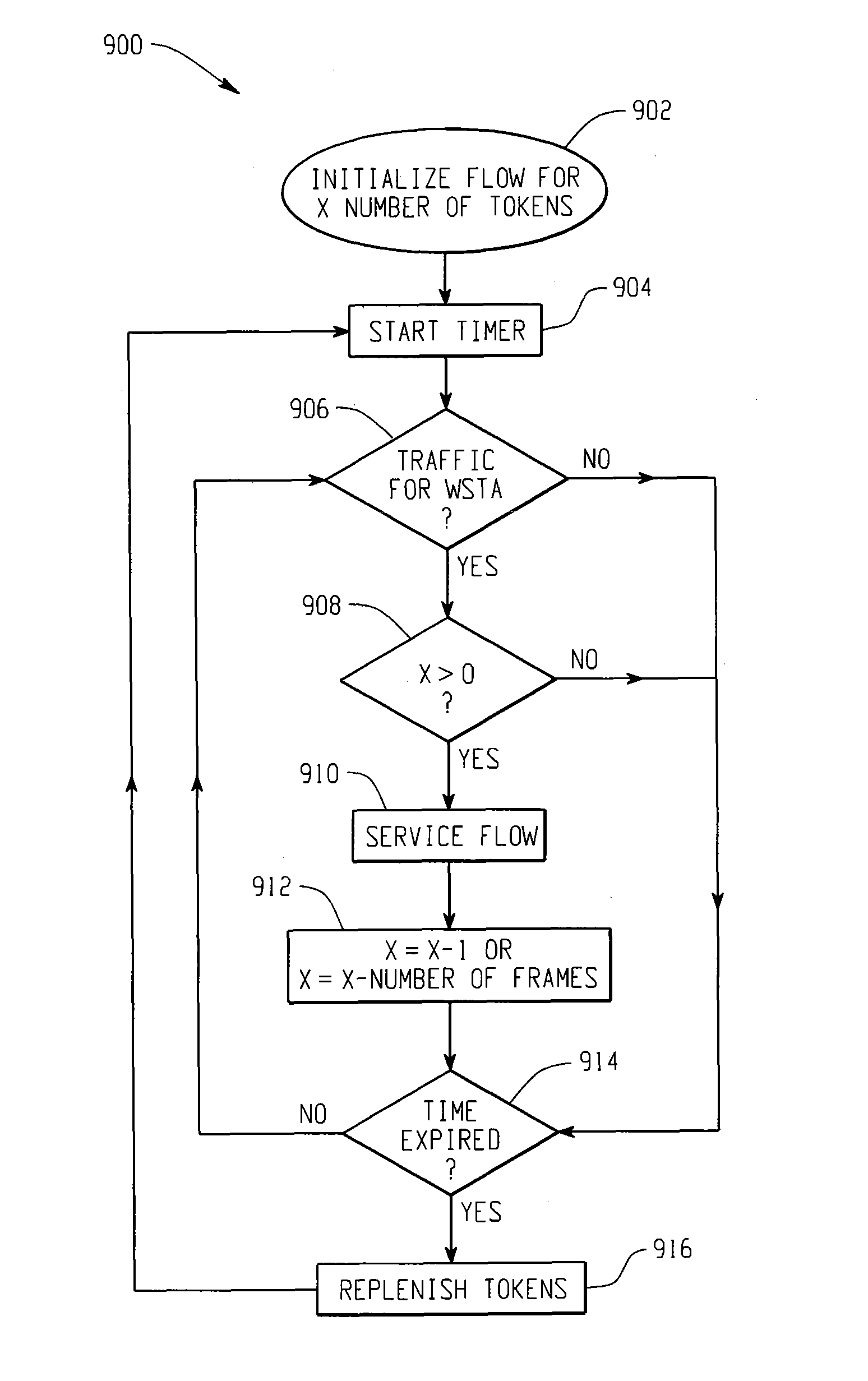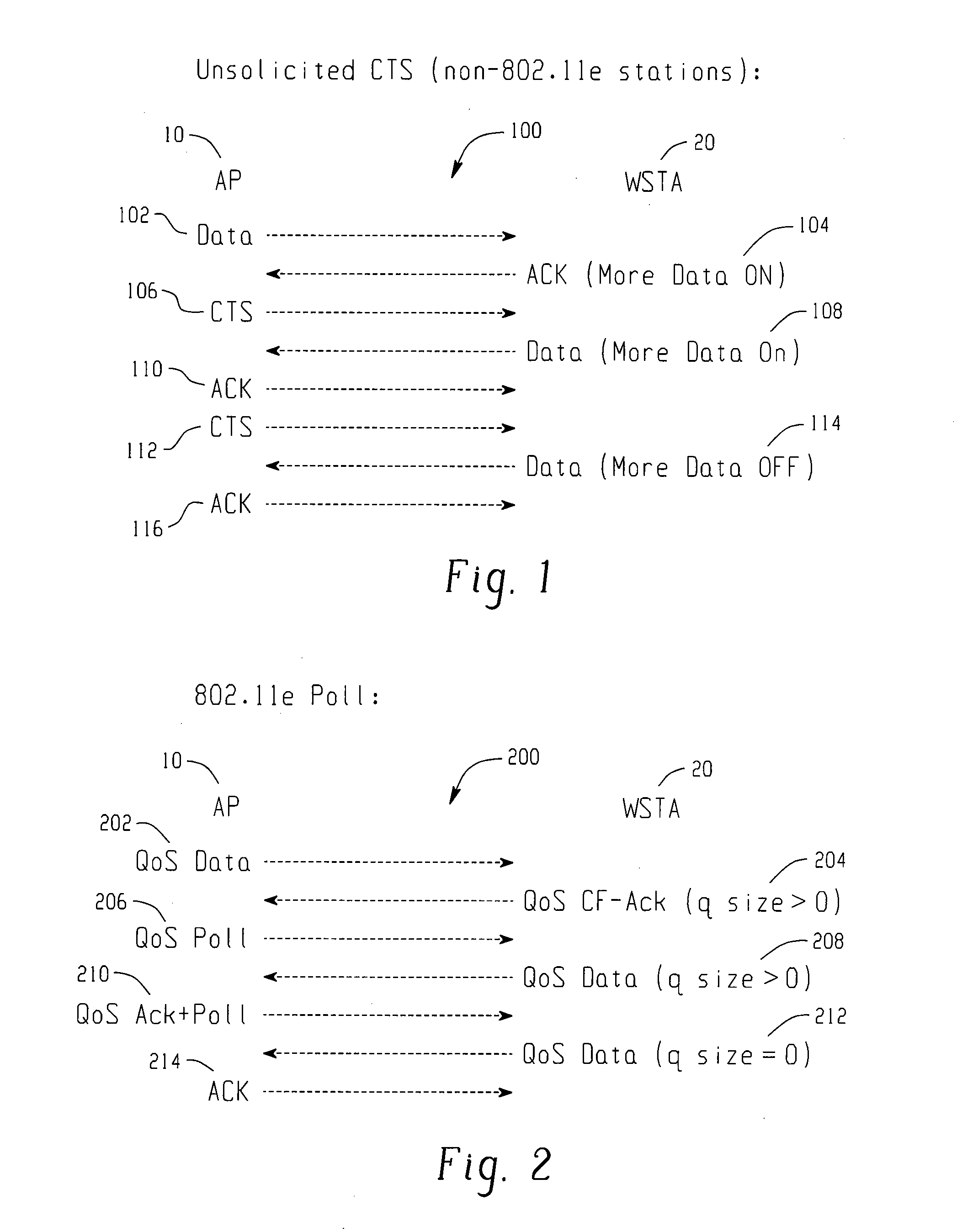Method for a simple 802.11e HCF implementation
a hybrid coordination and 802.11e technology, applied in the field of simple 802.11e hcf implementation, can solve the problems of not supporting most ap vendors (including cisco), edcf is not sufficient for qos for interactive voice, and 802.11e draft, so as to achieve the effect of maximizing bandwidth utilization
- Summary
- Abstract
- Description
- Claims
- Application Information
AI Technical Summary
Benefits of technology
Problems solved by technology
Method used
Image
Examples
Embodiment Construction
[0039]Throughout this description, the preferred embodiment and examples shown should be considered as exemplars, rather than limitations, of the present invention.
[0040]The current 802.11e draft standard for QoS defines two access methods—a CSMA-based access method called EDCF and a hybrid access method call the Hybrid Coordination Function. In the HCF access method, a Hybrid Coordinator (HC) sends a poll to a client station to grant the station a polled Transmission Opportunity (TXOP).
[0041]It is generally agreed that EDCF is not sufficient for QoS for interactive voice in an enterprise environment with “hidden” stations. However, HCF, as originally defined in the 802.11e draft, requires a very complex AP implementation. Therefore, most AP vendors (including Cisco) do not want to support it, at least not in an initial 802.11e-compliant release. This document proposes an AP HCF implementation that is greatly simplified and more “client friendly”.
[0042]The simple AP HCF implementati...
PUM
 Login to View More
Login to View More Abstract
Description
Claims
Application Information
 Login to View More
Login to View More - R&D
- Intellectual Property
- Life Sciences
- Materials
- Tech Scout
- Unparalleled Data Quality
- Higher Quality Content
- 60% Fewer Hallucinations
Browse by: Latest US Patents, China's latest patents, Technical Efficacy Thesaurus, Application Domain, Technology Topic, Popular Technical Reports.
© 2025 PatSnap. All rights reserved.Legal|Privacy policy|Modern Slavery Act Transparency Statement|Sitemap|About US| Contact US: help@patsnap.com



